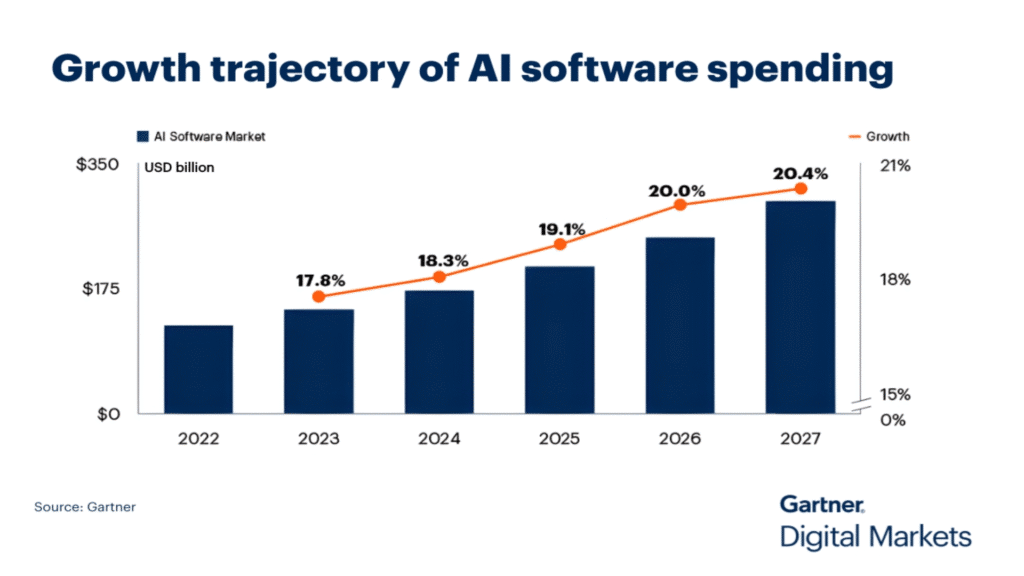The year 2025 exposed a critical vulnerability in the Fast-Moving Consumer Goods (FMCG) sector:
the growing gap between possessing vast amounts of data and the ability to translate it into decisive, profitable action.
Commercial teams found themselves drowning in a sea of spreadsheets and disconnected systems, leading to analysis paralysis just as market pressures intensified. It has been recorded that the average employee spends 13 hours weekly working with data. For Commercial Directors, RGM teams, and Category Managers, this gap is costly — slowing decisions, increasing pressure from retailers, and resulting in missed opportunities.
Surviving and thriving in the consumer goods industry of 2026 will demand a complete overhaul of commercial pricing strategy. The era of static price lists and reactive adjustments is over. The future belongs to those who can master real-time, AI-driven dynamic pricing and build a truly resilient RGM framework.
In this article, we unpack the key developments and fmcg trends observed in 2025, the ongoing challenges facing commercial teams, and why 2026 will demand complementary, FMCG-specific analytics solutions that simplify data, accelerate decision-making, and transform complex information into clear commercial actions. In addition, we explore how machine learning and generative AI models continue to reshape pricing, promotion, and portfolio strategies across the industry.
What FMCG Trends in 2025 Taught Us About Commercial & RGM Analytics
2025 marked a turning point for FMCG organisations: analytics capabilities expanded rapidly, yet commercial teams still struggled to turn data into immediate action. While AI, automation, and real-time analytics matured significantly, the year exposed clear gaps in how pricing, promotion, and portfolio decisions are made on the ground.
For Commercial Directors, RGM teams, and Category Managers, fmcg trends in 2025 made it clear that more data does not equal better decisions — unless insights are rapid, connected, and commercially contextualised.
Across the consumer goods industry, three major shifts defined how commercial and RGM functions interacted with data:
1. Faster analytics, slower commercial use
Leveraging AI and automation made data processing faster. However, many teams spent large amounts of time navigating spreadsheets, which take days to generate, scattered BI dashboards, and inconsistent data sources. Most FMCG firms enhanced data availability but not decision readiness — which is critical in this time-sensitive industry.
2. Advanced analytics grew, but interpretation still bottlenecked teams
There was widespread use of NLP, predictive models, and automated reports. Nonetheless, commercial teams found it difficult to translate these outputs into clear actions, especially under retailer deadlines and fierce competition.
3. Real-time insights emerged, but workflows didn’t keep up
Real-time dashboards and big data tools became more accessible, but internal processes still revolved around weekly or monthly rhythms. Consequently, opportunities were identified too late to act upon and impact revenue.
How This Sets the Stage for 2026

These lessons revealed a gap that traditional BI tools alone can’t close:
Commercial teams need technology that transforms data into instant, actionable recommendations — not just visualisations.
Key Data & Analytics FMCG Trends in 2026

Integration of Machine Learning (ML) and Artificial Intelligence (AI)
With the aid of agentic AI tools and integration of machine learning, businesses can automate several D&A tasks like predictive maintenance, data management, and anomaly detection. It has been recorded that approximately 65% of businesses adopted or considered using AI models and machine learning in data analytics. It is also expected that artificial intelligence in consumer goods will reach a market size of $461.43 billion in 2029. Using AI and agentic AI models in data analytics has made forecasting more sophisticated, enabling firms to use predictive analytics to identify market trends and user behaviour with notable accuracy. In short, the integration of artificial intelligence and machine learning in data analytics has resulted in better predictions and automation of data processes.
Edge Computing
Processing data closer to its source is a complete game-changer due to the explosion of data generation. Edge computing processes data at its origin, reducing delays caused by long transmission and benefiting time-sensitive applications. Additionally, edge computing results in lower bandwidth usage, reducing costs due to less data being sent to the cloud. Local processing also minimises security risks associated with breaches during transmission. Ultimately, edge computing aids in data management processes, helping businesses make fast, informed decisions based on sensor data — especially beneficial in time-sensitive environments.
Data-as-a-Service (DaaS) Models Growth
Data-as-a-Service platforms enable businesses in the FMCG landscape to outsource their data and analytics efforts, including processing, storage, and predictive modelling, allowing them to use sophisticated tools without the need for vast infrastructure investments. The DaaS trend has allowed smaller businesses to be more competitive in their markets. DaaS is a model that allows firms to consume data as a utility — much like electricity and water — and the main benefits include cutting costs, scaling data usage, and accessing updated data from various locations, all of which enable easier data management.
Natural Language Processing (NLP)
Innovations in NLP are widening the range of usable data sources. Platforms can now analyse unstructured data from customer reviews, social media posts, and big data, extracting valuable sentiment and feedback. NLP aids businesses in making informed decisions by relying on a deeper understanding of market trends and consumer needs, consequently allowing them to enhance customer experience, extract valuable insights, and analyse large datasets.
Advanced Data Visualisation
Raw data interpretation can be difficult; therefore, data storytelling and data visualisation make understanding raw data more accessible. For instance, a spreadsheet with scattered numbers can be turned into a story with clear visuals, making data interpretation easier. An example of advanced data visualisation is automated data storytelling — software that takes raw data and turns it into clear and meaningful narratives spotlighting key findings and suggested actions.
Real-Time Big Data Analytics
Businesses relying on traditional analytics often miss out on opportunities and act too late. The delay caused by traditional analytics results in the loss of both time and money. Here comes the key role of real-time big data analytics, which processes data as it is generated and allows organisations to act instantly. Unlike traditional analytics that take hours or even days, real-time analytics provides actionable insights within milliseconds.
Improved Data Privacy & Security
One of the most notable fmcg trends is keeping data safe and secure has become a priority as businesses manage large datasets. Also, new laws such as GDPR and CCPA mean firms must adopt better ways to secure their internal data and ensure customer data privacy — including protection of personal information — while still utilising data efficiently. Examples include data anonymisation, encryption, and zero-trust frameworks, which ensure strict identity verification before granting access to data and systems.
What This Means for Commercial Teams in 2026
For Commercial Directors, RGM teams, Category Managers, and Trade leaders, the developments of 2025 made one thing clear: 2026 will demand faster, sharper, and more commercially focused decision-making. This isn’t just another cycle of change; it’s a fundamental reshaping of the operational and competitive landscape.
To succeed in 2026, commercial organisations must:
• Adopt AI and machine-learning tools to accelerate pricing, promotion, and portfolio decisions.
• Shift to real-time and automated analytics to reduce dependence on manual Excel work and weekly reporting cycles.
• Focus on commercial actionability, not simply data visibility — insights must guide what to do next, not just show what happened.
• Strengthen data consistency and integration so teams can trust the information they see.
• Link analytics directly to revenue outcomes, demonstrating clear ROI through improved pricing efficiency, optimised promotions, and stronger market execution.
To sum up, the most efficient commercial teams in 2026 will be those who not only understand these trends, but who translate them into immediate commercial actions. It can be estimated that CPG businesses taking this data-driven approach to revenue growth management will witness sales growth of 3% to 5%.
Why 2026 Requires Complementary Technology Solutions
The transition to 2026 is not just a technological upgrade; it is a fundamental shift in capability, process, and culture. Given the limitations observed in 2025 — from data fragmentation to manual analytics bottlenecks — FMCG businesses are shifting toward complementary, FMCG-specific technology solutions that help commercial teams act faster and with more precision and confidence.
These solutions are vital because they:
• Cut analysis time dramatically — removing the need for pivot tables, manual data preparation, and hours spent reviewing scattered reports.
• Enable real-time decision-making, which plays a paramount role in pricing, promotion planning, and retailer negotiations.
• Simplify complex data, turning hundreds of rows and numbers into clear recommendations and diagnostics.
• Reduce cost and reliance on large data science teams by embedding intelligence directly into commercial workflows.
• Ensure consistency and accuracy by reducing siloed information and eliminating human error.
Looking for a Complementary Technology Solution?
Traditional practices like pivot tables, scattered spreadsheets, and manual reporting slow down commercial teams and delay critical pricing and promotion decisions. In a fast-paced FMCG environment, those delays cost margin and competitiveness — resulting in lost revenue.
With Marketeers Research’s Data & Analytics Solutions — powered by our Smart Value™ Platform — your team can eliminate manual work and unlock automated, real-time analytics for pricing, promotion, and competitive benchmarking.
Our platform transforms complex FMCG data into simple, intuitive dashboards and diagnostics, helping your team:
• Discover opportunities instantly
• Evaluate pricing and promo scenarios
• Benchmark performance against competitors in real time
• Make faster and more confident commercial decisions
Looking to accelerate commercial decision-making in 2026?
Our Data & Analytics Solutions can support your growth.

